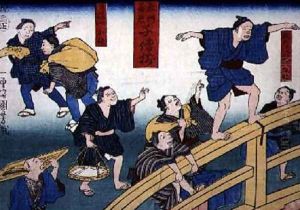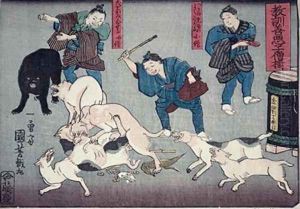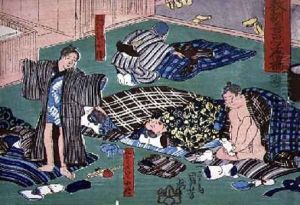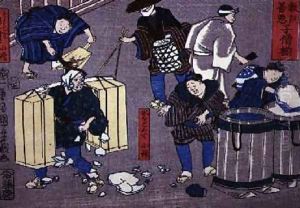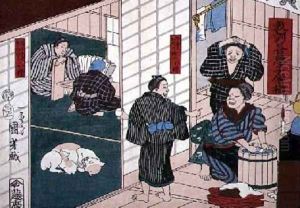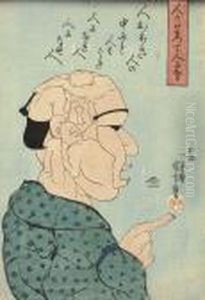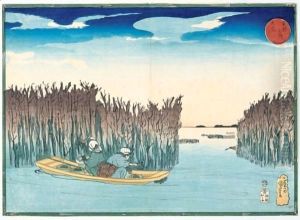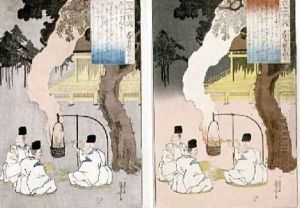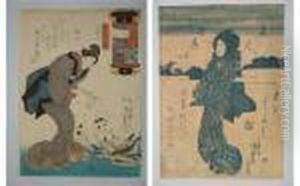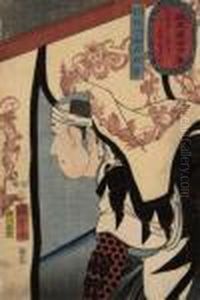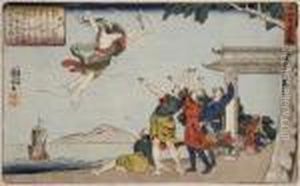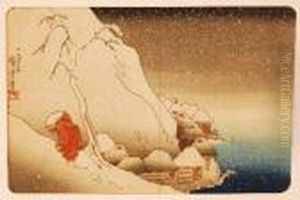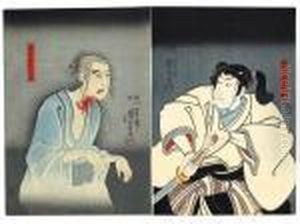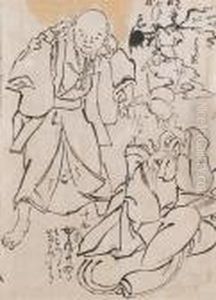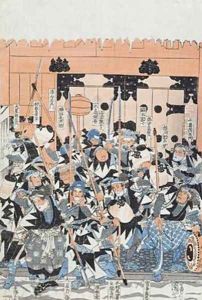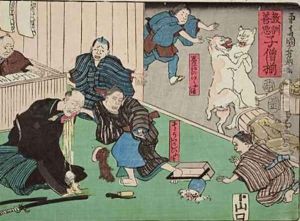





Moral teaching for shopboys giving good and bad examples of behaviour 9
-
About Reproduction
Discover the allure of art with our faithful reproduction of "Moral teaching for shopboys giving good and bad examples of behaviour 9", originally brought to life by the talented Utagawa Kuniyoshi. Unlike posters or prints, our hand-painted oil painting breathes an unique sense of depth and texture into your space. Every detail, every stroke, and every texture is meticulously recreated, paying the perfect homage to Utagawa Kuniyoshi and his artistic vision.
Owning this piece is more than just decoration - it's a statement of your refined taste in art. Let the vibrant colors and intricate details of this replica serve as a daily reminder of the beauty in our world. Elevate your decor and appreciate the richness of art with our replica of this masterpiece.
-
Painting Description
"Moral teaching for shopboys giving good and bad examples of behaviour 9" is a woodblock print created by the renowned Japanese artist Utagawa Kuniyoshi. Kuniyoshi, a prominent figure of the Utagawa school, is celebrated for his dynamic compositions and mastery in the ukiyo-e genre, which flourished during the Edo period (1603-1868). This particular work is part of a series that aims to impart ethical lessons to young apprentices, often referred to as "shopboys," through vivid visual storytelling.
The series, known for its didactic purpose, juxtaposes good and bad behaviors to guide the youth in their moral and social conduct. Each print typically features two contrasting scenes: one illustrating virtuous actions and the other depicting misconduct. The intention is to provide clear, visual examples that underscore the consequences of one's actions, thereby promoting moral rectitude and societal harmony.
In "Moral teaching for shopboys giving good and bad examples of behaviour 9," Kuniyoshi employs his characteristic attention to detail and expressive style to bring these lessons to life. The good example might depict a shopboy diligently attending to his duties, showing respect to his elders, or engaging in honest trade practices. Conversely, the bad example could illustrate a shopboy engaging in deceit, neglecting his responsibilities, or displaying disrespectful behavior. Through these contrasting depictions, Kuniyoshi not only entertains but also educates his audience, reinforcing the values of diligence, honesty, and respect.
Kuniyoshi's work is notable for its ability to blend artistic excellence with educational content. His prints are not merely decorative but serve as tools for moral instruction, reflecting the societal values of the Edo period. The series remains a significant cultural artifact, offering insights into the pedagogical methods and ethical standards of the time. By examining these prints, contemporary audiences can gain a deeper understanding of the historical context and the enduring importance of moral education in Japanese culture.
-
Lead Time & Shipping
When you order this oil painting replica, it typically takes 2-3 weeks to paint. If the artwork is more complex, it might need a little more time to ensure the best quality. Once it's ready, we'll send you a photo for your approval. After you give the green light, we'll ship it to you for free.
-
Return & Refund
We believe in the quality of our hand-painted oil painting reproductions, and your satisfaction is our priority. If for any reason, you are not completely satisfied with your purchase, we offer a 45-day return policy. You can return your artwork within 45 days of receipt and receive a full refund. Please note that the artwork must be returned in the original packaging and in the same condition as it was received.





